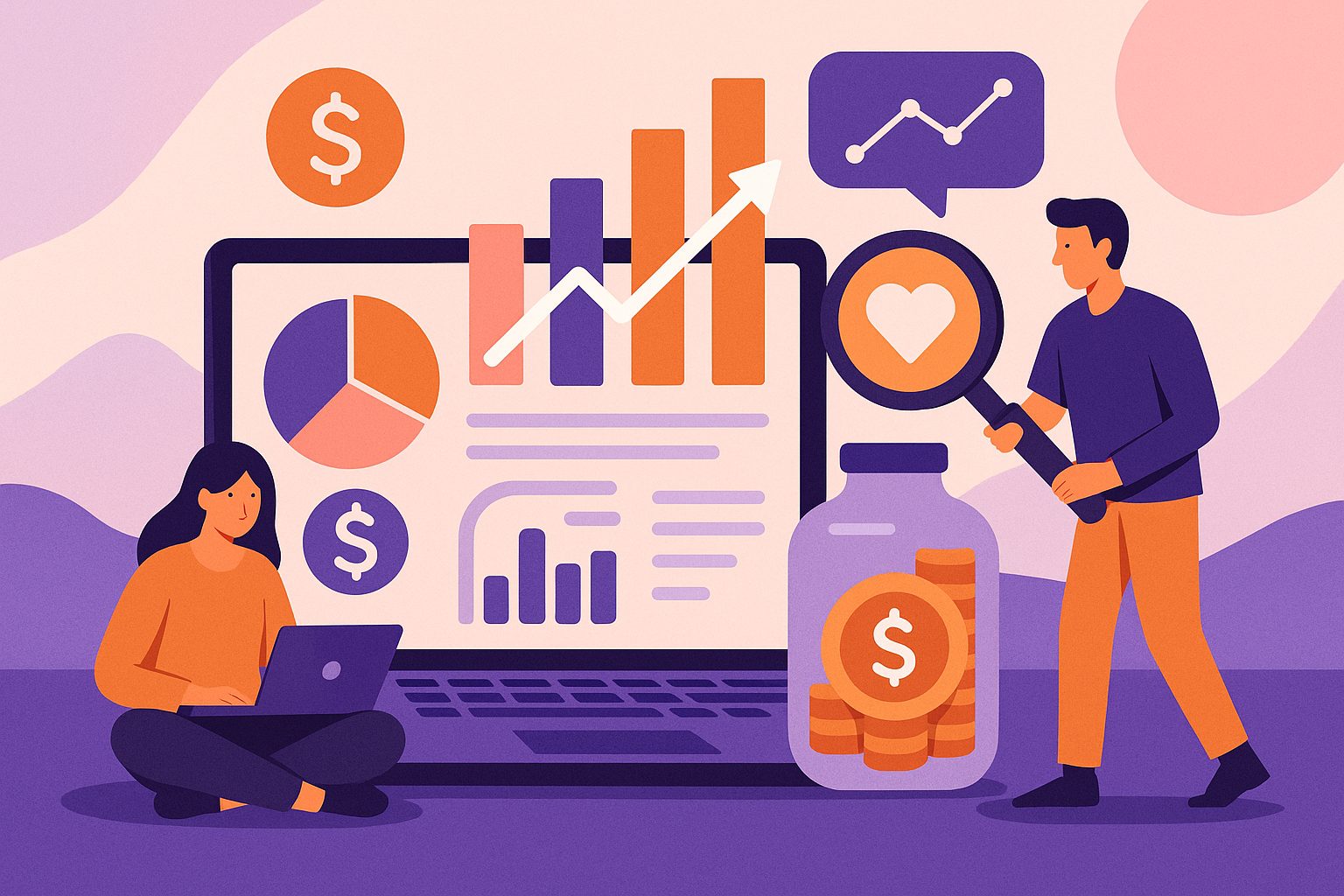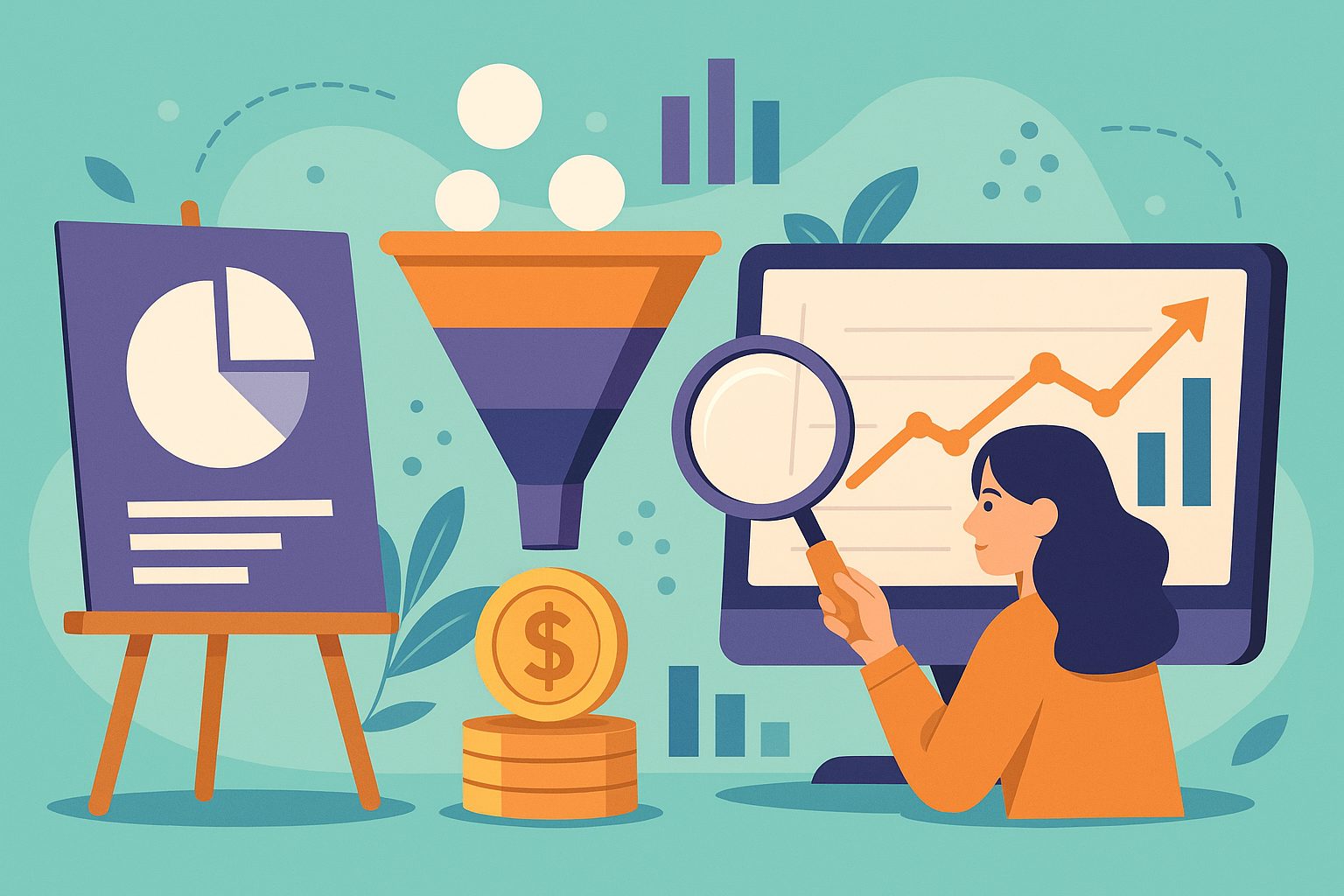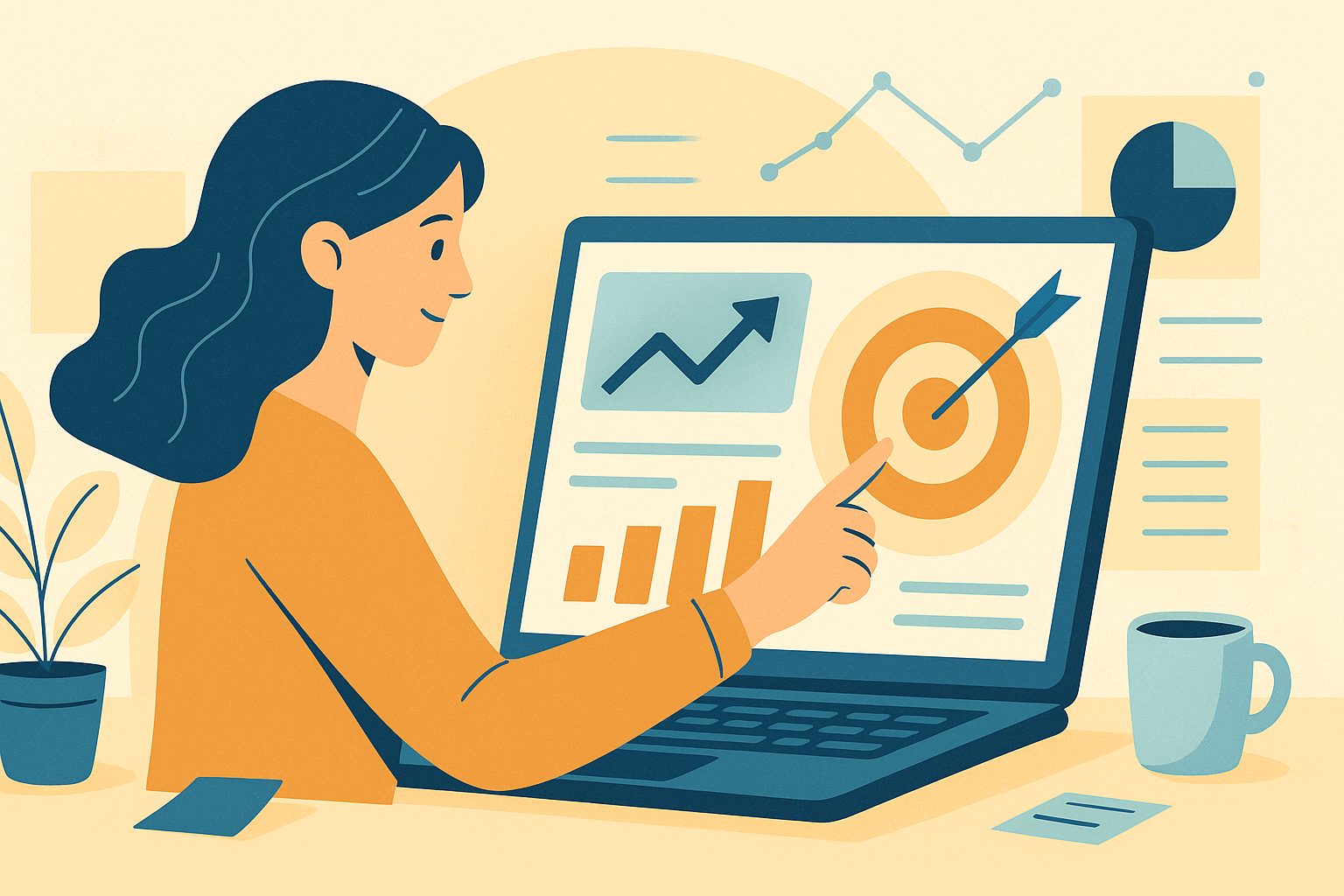Why Real-Time Reporting Dashboards Transform Campaign Management
Crowdfunding and fundraising campaigns thrive on momentum, but without clear visibility into performance, momentum can falter before it ever reaches full speed. Real-time reporting dashboards act as your digital nerve center, consolidating data from multiple sources—email platforms, social media channels, payment gateways, and web analytics—into a single view. Instead of juggling spreadsheets and manually updating charts, you gain instant insights into your most critical indicators: total funds raised, pledge velocity, backer acquisition cost, and social engagement trends. With the right dashboard, campaign creators can spot emerging opportunities, detect issues before they escalate, and make informed adjustments on the fly. More than just a display of numbers, dashboards become strategic allies that keep your campaign agile, transparent, and relentlessly focused on its funding goals.
Defining the Metrics That Matter Most to Creators
Before selecting a reporting dashboard, it’s crucial to identify which metrics will guide your decisions and measure your progress. Every campaign has unique goals, whether it’s reaching a funding target, maximizing early-bird pledges, or driving community growth. At a minimum, you’ll want to track total pledges, average pledge size, new versus returning backers, and conversion rates from marketing channels. Beyond these basics, advanced dashboards can profile ad performance, email open and click-through rates, website traffic sources, and fulfillment status. By clarifying the metrics that matter, you ensure your dashboard surfaces the right data at the right time, empowering you to optimize your messaging, reallocate budgets, and celebrate milestones in a way that resonates with your backers and your team.
Google Data Studio: Your Free Gateway to Custom Reporting
Google Data Studio stands out as a powerful, no-cost reporting dashboard that transforms raw data into compelling visuals. With its intuitive drag-and-drop interface, campaign creators can connect Google Analytics, Google Ads, YouTube, and even third-party platforms through community connectors. Data Studio’s customization options let you craft branded dashboards, combining bar charts of daily pledge totals with geo maps of backer locations and trend lines of email engagement. You can set up date-range controls and filter widgets so stakeholders can drill into specific time periods or segments. Perhaps best of all, Data Studio dashboards update automatically, ensuring everyone from your core team to external partners always sees the latest campaign snapshot. As a free tool with enterprise-grade capabilities, Google Data Studio is often the first stop for creators looking to centralize and visualize campaign data.
Tableau Public and Tableau Online: Enterprise Analytics for Creators
For campaigns that demand deeper analytics and interactive exploration, Tableau offers a robust solution. Tableau Public allows you to publish dashboards to the web, making them accessible to your team and backers without licensing costs. Tableau Online, the cloud-hosted version, provides secure sharing and collaboration features, accommodating larger datasets and advanced calculations. Campaign creators can blend data from CRM systems, fundraising platforms, and social media APIs, creating multi-dimensional views that reveal hidden correlations—such as how referral traffic from influencers influences pledge levels or which email segments yield the highest retention rates. With Tableau’s powerful data preparation and visualization tools, even non-technical users can craft sophisticated dashboards that adapt to evolving campaign needs, scaling seamlessly from boutique projects to multinational fundraising initiatives.
Looker: Data Modeling Meets Marketing Insight
Looker brings a modern twist to reporting dashboards by emphasizing data modeling as the foundation for reporting. LookML, Looker’s proprietary modeling language, allows you to define dimensions, measures, and relationships that reflect your campaign’s logic—whether it’s tiered reward structures, phased stretch goals, or geographic segmentation. Once modeled, these metrics become reusable building blocks for dashboard tiles and custom reports. You might create a tile showing pledge velocity over the first 72 hours, another highlighting most active referral sources, and a third illustrating social media engagement against daily funding progress. Looker’s embedded analytics capabilities also let you integrate these dashboards directly into your campaign website or portal, giving backers access to live data that bolsters transparency and fosters trust.
Klipfolio: Real-Time Dashboards in Minutes
When speed and simplicity are paramount, Klipfolio shines with prebuilt “klips” that accelerate dashboard creation. Campaign creators can pull data from crowdfunding platforms via APIs, import CSVs, or connect to Google Sheets and marketing tools. Klipfolio’s template gallery includes common campaign metrics—daily funding totals, average pledge amounts, backer acquisition cost—that you can drag onto your dashboard canvas. Each klip updates in real time, reflecting every new pledge, email click, or ad conversion. Custom calculations and thresholds trigger alerts when key metrics deviate from expectations, allowing you to pivot tactics before performance dips. For teams that need professional-grade reporting without an army of analysts, Klipfolio offers a balance of flexibility, speed, and visual polish that keeps your campaign’s pulse visible at a glance.
Grow: Automated Insights for Growing Campaigns
Grow focuses on automated insights, surfacing anomalies and trends that campaign creators might otherwise miss. Connected to over 100 data sources—including Facebook Ads, Mailchimp, Shopify, and Stripe—Grow’s AI-driven platform constantly scans your metrics to highlight what’s both noteworthy and actionable. During launch week, Grow might alert you to an unexpected spike in traffic from a particular blog, prompting you to engage that influencer further. Or it might detect a sudden drop in email open rates, suggesting it’s time to test a new subject line. Grow’s customizable dashboards display these insights alongside your key performance indicators, ensuring that you spend less time hunting for data and more time acting on it. For campaigns poised for rapid growth, Grow’s intelligent approach turns raw data into strategic advantage.
Chartio: Collaborative Dashboards for Data-Driven Teams
Chartio is designed for teams that prioritize collaboration and self-service analytics. Its cloud-based platform allows you to build charts and dashboards through both drag-and-drop and SQL queries, catering to non-technical marketers and data-savvy analysts alike. Campaign creators can embed dashboards within team wikis or share view-only links with external stakeholders. Chartio’s data storytelling features let you annotate charts with context—such as noting a successful press mention or a major reward reveal—creating a narrative thread through your campaign metrics. With flexible data source connections, you can merge crowdfunding platform data with email, social, and ad performance in a single pane. This unified view encourages cross-functional teams—marketing, operations, design—to collaborate on interpreting insights and driving campaign improvements.
Databox: Mobile-Friendly Dashboards for On-the-Go Insights
For creators who need to monitor campaign performance from anywhere, Databox offers mobile-optimized dashboards that update every minute. You can set up Datablocks for critical metrics—funds pledged today, new backers this hour, highest-converting ad creative—and arrange them on custom dashboard boards. The mobile app provides glanceable scorecards, push notifications, and snapshot emails that keep you informed when you’re away from your desk. Databox’s integrations with tools like Google Analytics, Facebook Ads, HubSpot, and Stripe mean you don’t need to toggle between apps to track performance. Whether you’re on a plane en route to a live event or simply stepping away from your laptop, Databox ensures you never miss a momentum shift or a chance to celebrate a funding milestone.
Cyfe: All-in-One Campaign Monitoring
Cyfe positions itself as an all-in-one business dashboard, making it suitable for solo creators and small teams looking to track every campaign variable in one place. You can add widgets for social media mentions, email signup growth, crowdfunding platform statistics, and website traffic, all on a single tab. Cyfe’s historical data storage allows you to analyze performance trends over multiple campaign cycles, identifying seasonal effects or evergreen strategies that consistently drive conversions. With executive dashboard views and public display options, you can showcase campaign progress in transparent dashboard screens at live events or investor pitches. Cyfe’s no-code configuration and broad range of data source integrations make it a versatile choice for creators who want a holistic view without the complexity of enterprise BI systems.
Power BI: Microsoft’s Answer to Marketing Intelligence
Microsoft Power BI brings enterprise analytics capabilities to the campaign creator’s toolkit, especially if you’re already invested in the Microsoft ecosystem. Power BI Desktop allows you to shape and transform data, modeling your campaign metrics with DAX formulas. You can publish interactive reports to the Power BI service, embedding dashboards into SharePoint or a bespoke campaign portal. Power BI’s natural language query feature, Q&A, lets team members ask questions—like “show me pledges by country over the last week”—and receive instant visual answers. Integration with Azure ML services opens doors to predictive analytics, such as forecasting your final funding amount based on early campaign velocity. For data-driven creators who demand robust analytics married to familiar Microsoft tools, Power BI is a compelling option.
Best Practices for Dashboard-Driven Campaigns
Regardless of the platform you choose, adhering to best practices ensures your reporting dashboard delivers maximum impact. Start by clearly defining your key performance indicators and mapping them to specific dashboard tiles. Group related metrics—such as email engagement together, social metrics together, and financial metrics together—so stakeholders can quickly locate information. Use color-coding or threshold indicators to highlight critical achievements (green for on-target) and issues (red for underperformance). Schedule automated report exports or live link shares for daily standups and weekly stakeholder updates to maintain accountability. Finally, don’t neglect data hygiene: verify that your tracking tags are correctly implemented, sources are connected, and date ranges align across tools. A well-structured, reliable dashboard lays the foundation for confident, data-driven decision-making throughout your campaign.
Future Trends: AI-Enhanced Reporting for Campaign Optimization
The next frontier in campaign dashboards is AI-enhanced reporting, where machine learning algorithms not only visualize data but also predict outcomes and recommend actions. Imagine a dashboard that alerts you to audience segments showing early interest and suggests tailored email sequences to nurture them. Or one that forecasts the impact of increasing your ad spend on key channels during the final 48 hours. Platforms like Tableau, Looker, and Grow are already embedding predictive analytics and anomaly detection, allowing creators to move from reactive reporting to proactive campaign optimization. By embracing these AI-driven capabilities, campaign creators gain a competitive edge, turning data into foresight and ensuring each decision—whether about creative, timing, or budget—aligns with the evolving dynamics of their backer community.




